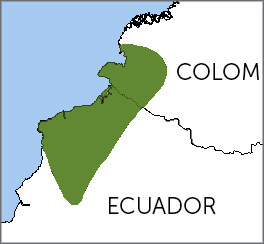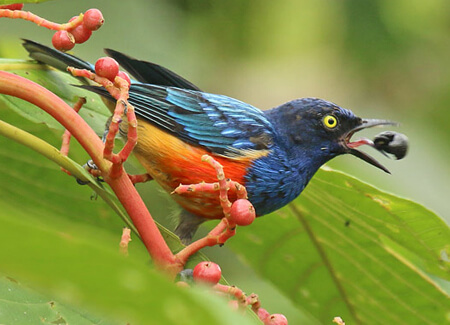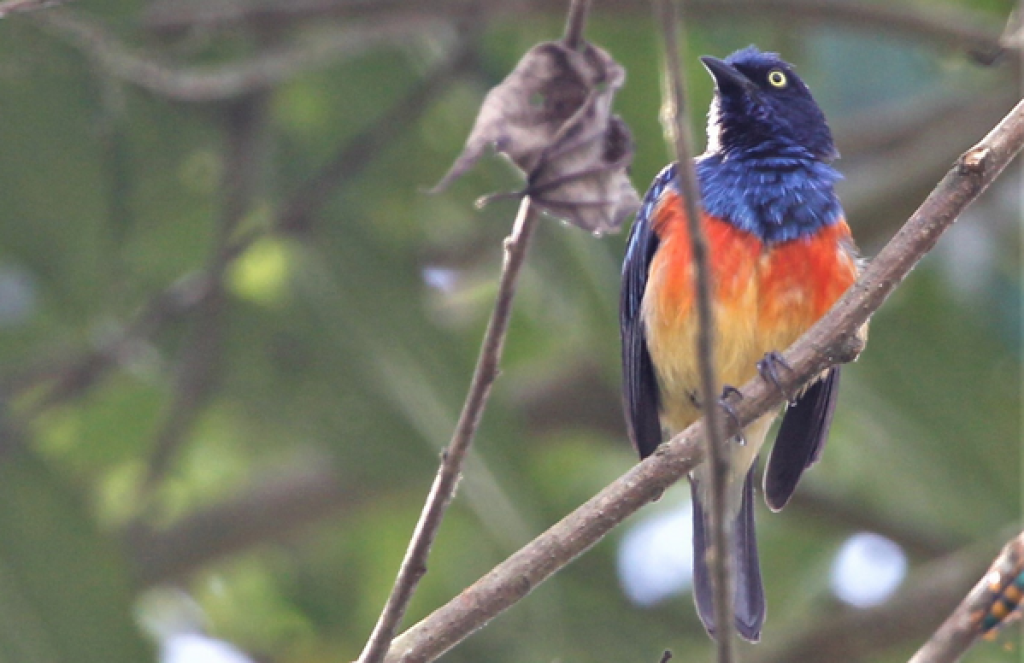 The colorful, thin-billed Scarlet-breasted Dacnis (a member of the tanager family) is found only on the Pacific slopes of Ecuador and Colombia. It's becoming increasingly scarce in both countries. Never considered a common species, it is now listed as Vulnerable on the IUCN Red List.
The colorful, thin-billed Scarlet-breasted Dacnis (a member of the tanager family) is found only on the Pacific slopes of Ecuador and Colombia. It's becoming increasingly scarce in both countries. Never considered a common species, it is now listed as Vulnerable on the IUCN Red List.
The main culprits in this bird's decline are habitat loss and fragmentation of its Chocó (wet lowland forest) habitat from logging and human colonization, along with conversion of primary forest to oil palm plantations. This biologically diverse ecoregion is shared by other threatened birds such as the Great Green Macaw and Banded Ground-Cuckoo.
The tanager family includes some of the world's most colorful birds, but not all are advanced songsters. For example, the song of Scarlet-breasted Dacnis is a series of thin notes. The Green-headed Tanager simply chirps.
Like other tanagers, this dacnis feeds on fruit, nectar, and insects. It is often observed in small family groups but will forage within mixed-species flocks as well.
Sign up for ABC's eNews to learn how you can help protect birds

Scarlet-breasted Dacnis by Dusan Brinkhuizen
The Scarlet-breasted Dacnis can be found in several Ecuadorian reserves where ABC has worked with in-country partner Fundación Jocotoco to preserve habitat: Rio Canande, which has recently been expanded, and Mindo Cloudforest Foundation's Rio Silanche Bird Sanctuary.
The Rio Canande site harbors other birds found nowhere else, including Golden-chested Tanager, Rose-faced Parrot, Long-wattled Umbrellabird, and Yellow-green Bush-Tanager. More than 360 bird species have been observed here, and plants, amphibians, reptiles, and mammals abound, including three species of monkeys frequently observed by guests to this forest hotel.
Conservation actions to benefit this bird include protecting remaining Chocó habitat, as well as improving connectivity between forest patches through habitat restoration.
Donate to support ABC's conservation mission!



















































